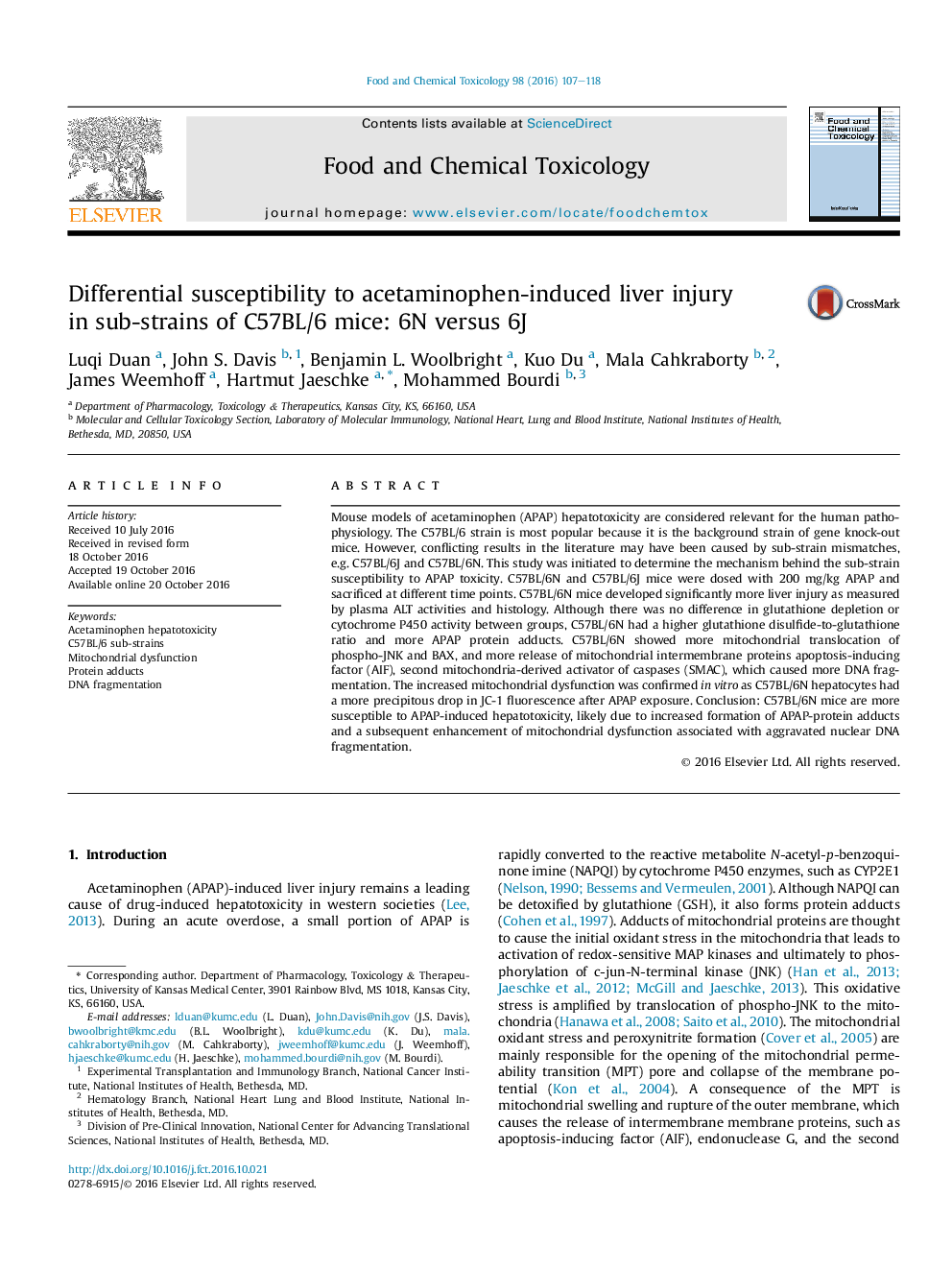| Article ID | Journal | Published Year | Pages | File Type |
|---|---|---|---|---|
| 5560401 | Food and Chemical Toxicology | 2016 | 12 Pages |
â¢Acetaminophen (APAP) hepatotoxicity is more severe in C57BL/6N versus C57BL/6J mice.â¢C57BL/6N have increased mitochondrial APAP protein adducts compared to C57BL/6J mice.â¢C57BL/6N mice show increased mitochondrial dysfunction and higher DNA fragmentation.â¢APAP hepatotoxicity mechanisms are similar between the 6N and the 6J sub-strains.â¢Overall, C57BL/6N mice are more susceptible to APAP overdose.
Mouse models of acetaminophen (APAP) hepatotoxicity are considered relevant for the human pathophysiology. The C57BL/6 strain is most popular because it is the background strain of gene knock-out mice. However, conflicting results in the literature may have been caused by sub-strain mismatches, e.g. C57BL/6J and C57BL/6N. This study was initiated to determine the mechanism behind the sub-strain susceptibility to APAP toxicity. C57BL/6N and C57BL/6J mice were dosed with 200 mg/kg APAP and sacrificed at different time points. C57BL/6N mice developed significantly more liver injury as measured by plasma ALT activities and histology. Although there was no difference in glutathione depletion or cytochrome P450 activity between groups, C57BL/6N had a higher glutathione disulfide-to-glutathione ratio and more APAP protein adducts. C57BL/6N showed more mitochondrial translocation of phospho-JNK and BAX, and more release of mitochondrial intermembrane proteins apoptosis-inducing factor (AIF), second mitochondria-derived activator of caspases (SMAC), which caused more DNA fragmentation. The increased mitochondrial dysfunction was confirmed in vitro as C57BL/6N hepatocytes had a more precipitous drop in JC-1 fluorescence after APAP exposure. Conclusion: C57BL/6N mice are more susceptible to APAP-induced hepatotoxicity, likely due to increased formation of APAP-protein adducts and a subsequent enhancement of mitochondrial dysfunction associated with aggravated nuclear DNA fragmentation.
